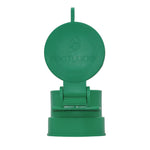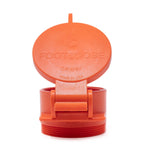You have no items in your shopping cart.
Driving an RV isn’t like driving a car. Your RV is bigger and longer. It has more blind spots, more mirrors, and more weight. It won’t stop on a dime, and it won’t make quick turns. But don’t let that stop you from mastering the art of RVing—learn to drive your RV with confidence so you can take more trips and go the distance.
Whether you’re driving a Class A motorhome or pulling along a fifth wheel, these RV driving tips will help you feel cool as a cucumber.
Get Comfortable Behind the Wheel
Skip the trip planning for a moment and spend some time sitting behind the wheel of your RV. Adjust the seat, feel the steering wheel, and get familiar with all the controls. You won’t be driving your RV every day like you do your personal car, so it can take longer to feel comfortable driving it. Exploring the RV from the driver’s seat before you go anywhere is one of the most underrated RV hacks for building confidence.
Start Small
Before you trek across the country, try driving your RV to your local state park. You’ll be on familiar roads so you can think less about directions. Plus, you’ll be close to home if anything goes wrong along the way.

Drive at a Slower Speed
As you start taking more RV camping trips, you’ll learn more about how your RV handles on the road. As a rule of thumb, it’s best to stick to a lower speed than what you’d normally drive in your own car. Higher speeds (even if you’re technically driving the speed limit) mean less time to react when you need to slow down or stop. Plus, your RV needs more time to stop than your average vehicle.
Get Familiar with Your Braking Power
Learning how your RV’s brakes work should be a top priority. The extra weight and length mean you need to give yourself more space to stop. The amount of braking pressure might also be different than what you’re used to in your daily driver. Make it a habit to start slowing down earlier than you would while driving a passenger car.
Tune Out Distractions
Driving in an RV can make every trip feel like a party, but make sure the party stays in the back. Tuning out distractions lets you focus on the road and make good decisions. This means letting someone else handle directions, change the radio, or send texts on your behalf.
Maintain Good Distance Between Cars
Maintaining distance between vehicles is a good idea no matter what you’re driving, but it’s even more important for RV drivers. RVs require more stopping time and won’t be able to stop if a driver right in front of you slams on the brakes. Maintaining good distance between cars ensures the safety of all nearby drivers in the event traffic comes to a sudden halt.
Check the Weather Ahead of Time
Driving an RV in inclement weather (e.g., snow, high winds, rain) can take a whole different driving approach. Checking the weather ahead of time can help you make better decisions or avoid traveling altogether. You might choose to leave a little earlier to avoid rain or even choose a different destination. If these aren’t options, you’ll at least know to take extra precautions.
Be Prepared to Use Runaway Ramps
Traveling in the mountains could make you more susceptible to brake failure. If your brakes go out, you may need to use runaway truck ramps to regain control. These ramps can be intimidating, but they might also save your life if your RV is out of control on a steep descent. To use the ramp, alert other passengers, turn on your hazard lights, and aim your rig as straight as possible toward the ramp. After rolling up the ramp, turn your steering wheel to one side to prevent your rig from rolling backward. Shift into Park, then place the emergency brake.
Using the proper breaking techniques can help you prevent the scary situation of needing a runaway ramp. Avoid riding the brake when traveling over mountains so your brakes don’t overheat.
Practice Backing Up Your RV

Today’s RVs are usually equipped with rear cameras. If you don’t have one, consider purchasing one to make backing up easier and safer. And if you do have one, you’ll still want to practice backing up your rig. Because of the vehicle’s size and weight, backing up can be one of the more challenging aspects of RV camping and is something you’ll likely encounter with every trip.
Allow Extra Space for Turns
RV camping means sometimes navigating tight spots within campgrounds or on the road. Your RV won’t be able to handle the same sharp turns as your car, so make sure you allow extra space whenever possible. Not having enough space could mean clipping corners or going off-road. One way to practice this is to set up cones in a parking lot and practice making different turns. Learn how your RV tracks so you can anticipate how much space you need for turning.
Learn How to Use Your Mirrors
RVs have a lot more mirrors than the average ride. Examine each one and see what they can show you. Adjust them before you hit the road to minimize blind spots and know which mirror to look at when you need to change lanes or check behind you.
Invest in Roadside Assistance
Things happen on the road, even when you’re RV camping. From a flat tire to a broken headlight, fixing issues on an RV requires a different approach than with your regular car. Investing in roadside assistance can take some of the stress out of your travel delays. You’ll get expert help and can usually get back on the road faster than when handling issues alone.
Practice Often
One of the most important RV tips on this list is simply to practice often. It’s the only way to build real confidence behind the wheel. When you feel good driving your RV, you’ll use it more often—the road is the limit! Looking for advice for showering in an RV?









